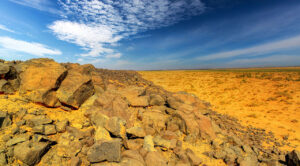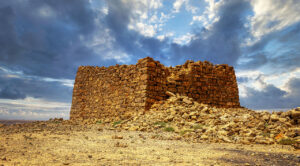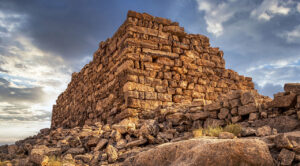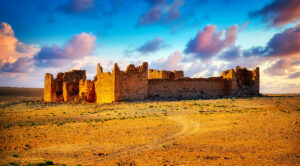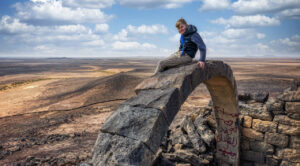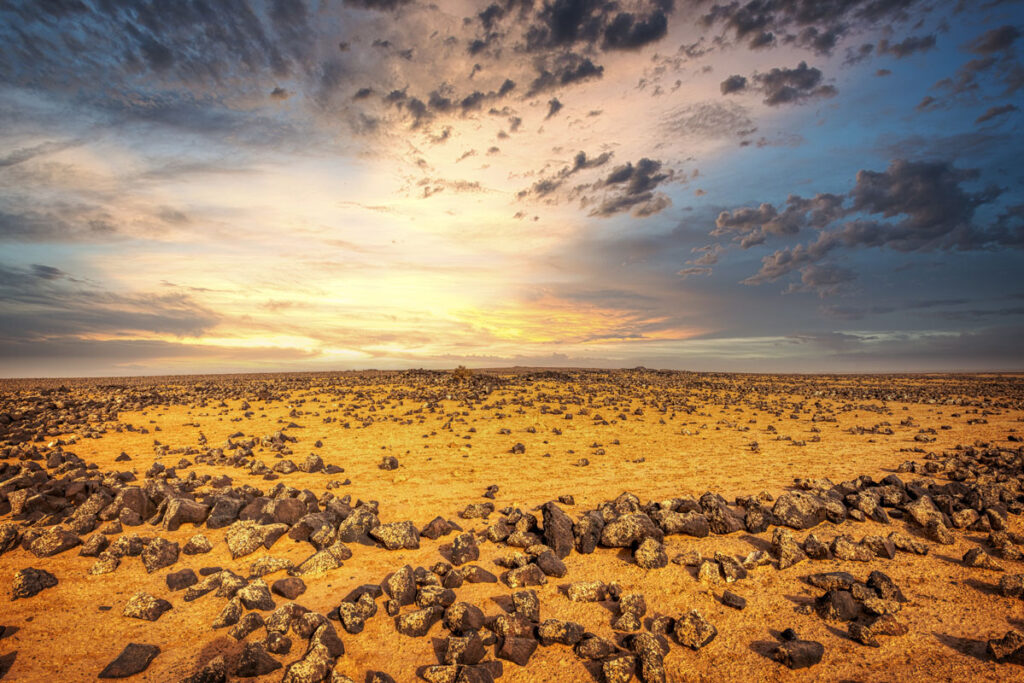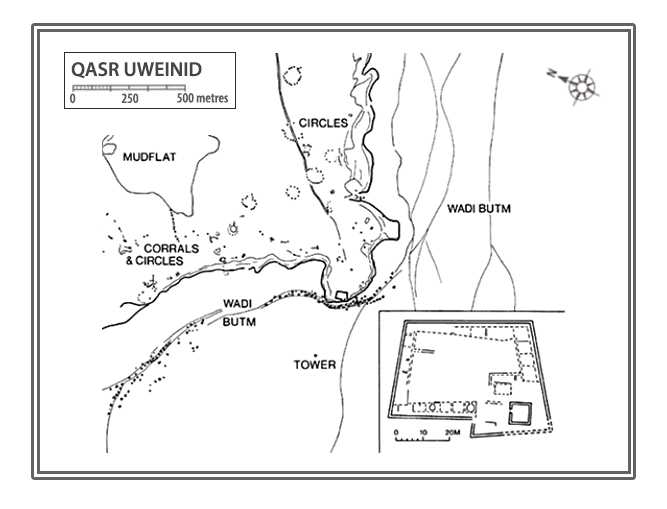The small military Roman Fort of Uweinid lies on the tip of a law basalt spur 15 km southwest of Qasr Azraq and overlooking the Wadi Butm which bends around it, providing good natural defence on the north and west sides. It was built in the 3rd century AD to protect the source of Wadi as-Sirhan (now in Saudi Arabia) but was abandoned less than 100 years later. However, it remains one of the oldest standing forts and is a powerful reminder of the past Roman occupation of the area.
In plan, Uweinid is irregular with a tower in the southwest corner and a small entrance at an angle of the west wall. Between the entrance and the tower lies the inscribed lintel which mentions Septimius Severus and L. Marius Perpetuus, Governor of Arabia 200 – 202. Its presence here implies a Raman military presence in Azraq by then, but no proof of this has yet emerged.
The inscription is still clear, as is the deliberate obliteration of the fourth, fifth and sixth lines, possibly done to erase the name of the Emperor Geta, assassinated by his brother Caracalla in 212. A further inscription, now lost, referred to the building of baths for detachment of the Third Cyrenaica Legion.
Like the other small fort at Usaykhim on the north-east side of the basin, Qasr Uweinid must have been dependent on the large fort, Qasr Azraq, which stood a few miles away beside the northern pools at the heart of the Azraq oasis. It is inconceivable that the extremely remote site of Qasr Uweinid would have been occupied when the Qasr Azraq was not.
Uweinid appears to have been abandoned in the 4th century, although it is mentioned by the 10th-century geographer al-Maqdisi. Later during early Arab times, Uweinid is known to have been used as a caravan stop en route from Arabia to Amman.
All the forts in this category are modest in size and would be described as fortlets. The forts were planned with a central court and rooms on the inside of the outer walls, so there is a measure of uniformity in their design. None of the buildings is reported to have stood more than one storey high, except for the tower inside the fort at Qasr Uweinid. Looking at the size of Qasr Uweinid, 0.25 ha. (0.6 acres) in area, is barely one-sixth of what one would expect for a full Early Empire infantry auxiliary regiment.
